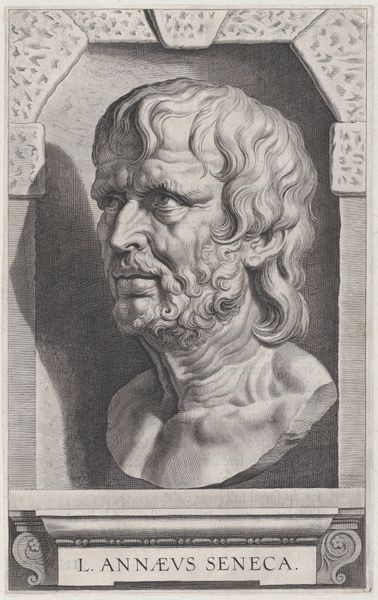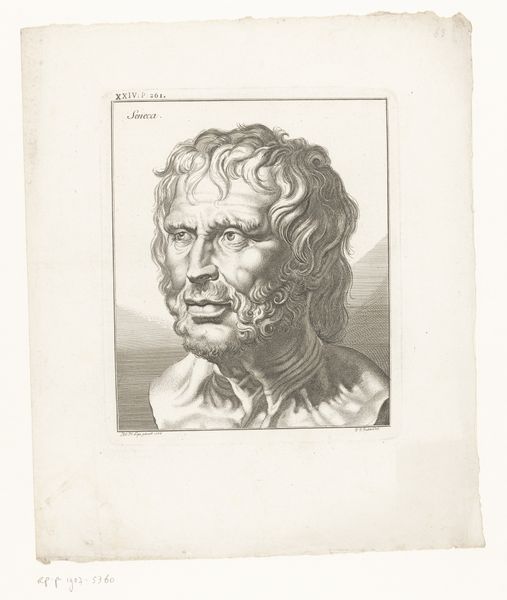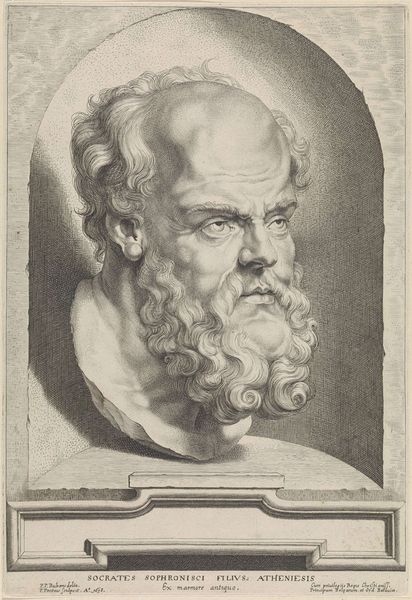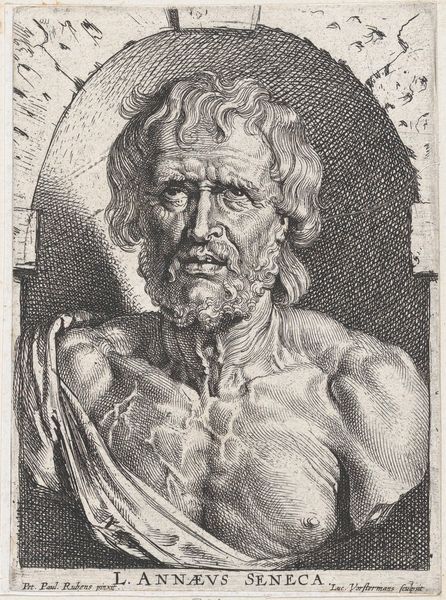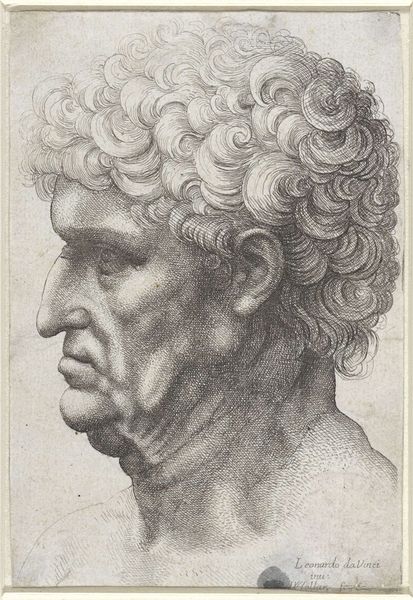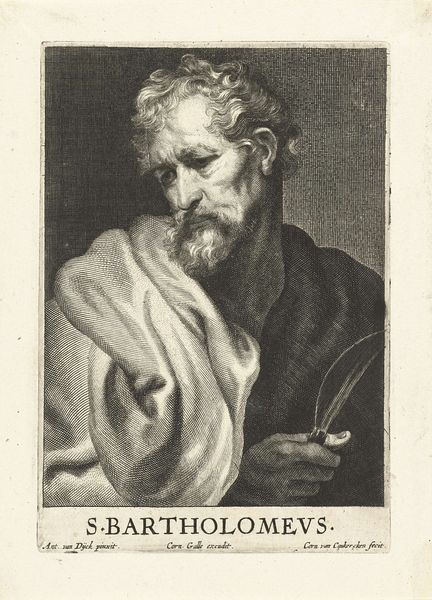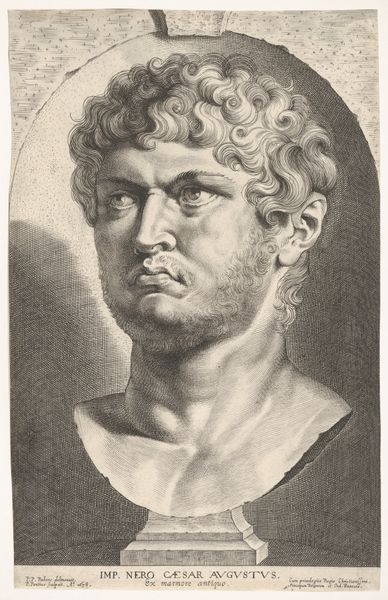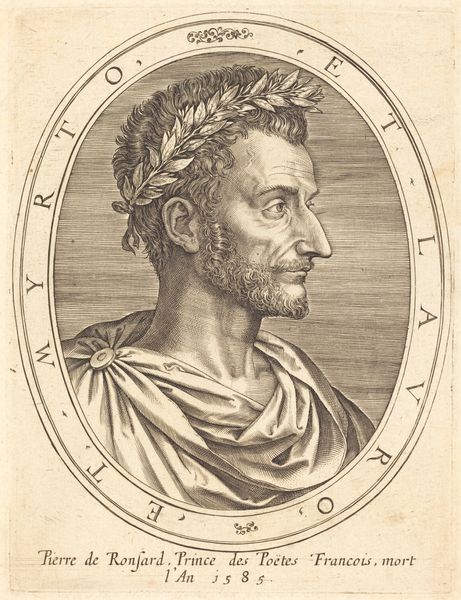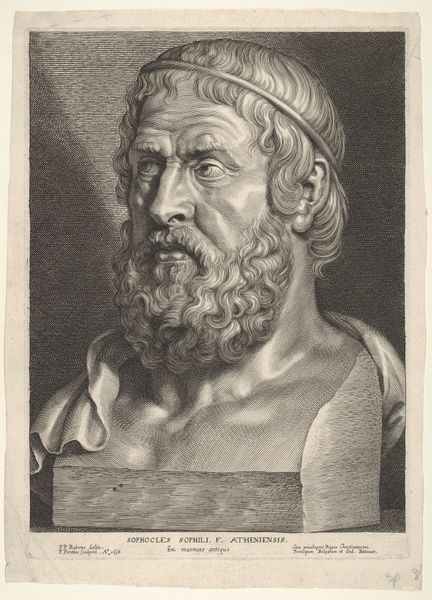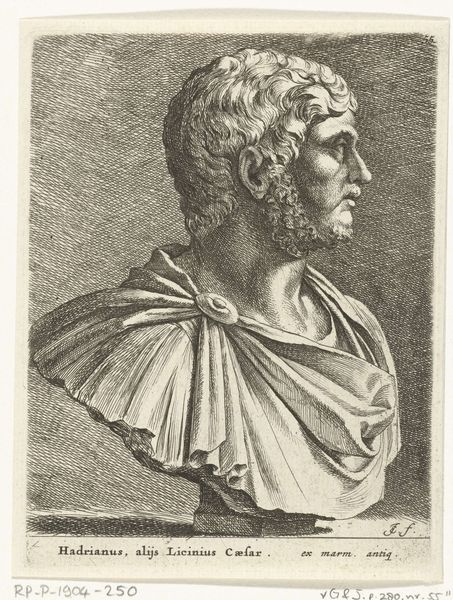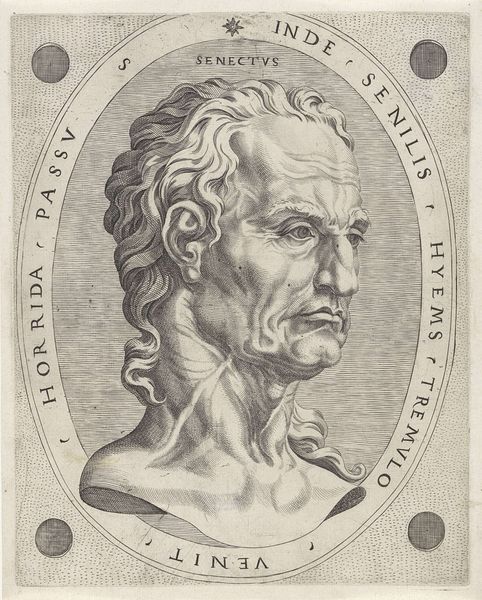
print, engraving
#
portrait
#
baroque
# print
#
charcoal drawing
#
ancient-mediterranean
#
line
#
history-painting
#
engraving
Dimensions: height 293 mm, width 201 mm
Copyright: Rijks Museum: Open Domain
This print of Seneca's bust was made in 1648 by Lucas Vorsterman I, using engraving and etching. These are essentially industrial processes, adapted to artistic ends. The design begins with a metal plate, likely copper. Using a sharp tool called a burin, the artist would incise lines into the plate, creating grooves that hold ink. Etching involves covering the plate with a protective wax, scratching through the wax to expose the metal, then immersing the plate in acid, which bites into the exposed areas. The plate is then inked, and the surface wiped clean, leaving ink only in the etched or engraved lines. Finally, the plate is pressed onto paper, transferring the image. Look closely and you can see how Vorsterman used the graphic possibilities of line to mimic the texture and form of the marble bust. Consider too the amount of skilled labor involved in the original carving, and then in turn, the substantial effort required for Vorsterman to make this print. Prints like this one blur the boundaries between craft and fine art, and were essential to the distribution of knowledge in early modern Europe.
Comments
No comments
Be the first to comment and join the conversation on the ultimate creative platform.
